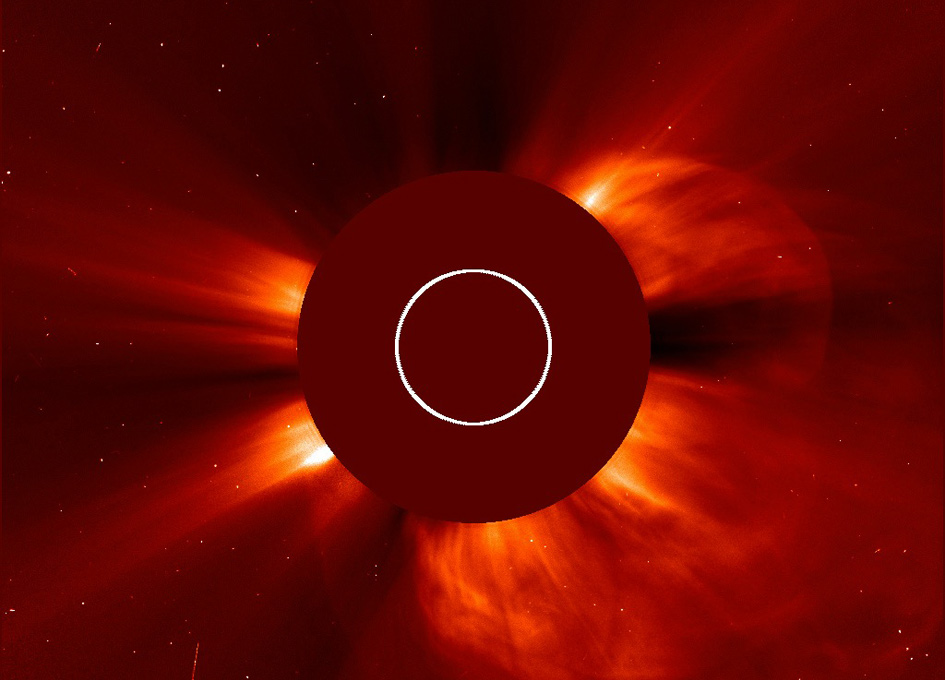Coronal Mass Ejection Accompanies X-class Flare

A giant cloud of solar particles, called a coronal mass ejection, explodes off the sun on Jan. 7, 2014
This can be seen in the light halo to the lower right in this image captured by ESA/NASA’s Solar and Heliospheric Observatory. The sun is obscured to better see the tenuous atmosphere around it. Image Credit: ESA/NASA/SOHO
The Jan. 7, 2014, X-class flare was also associated with a coronal mass ejection, or CME, another solar phenomenon that can send billions of tons of particles into space that can reach Earth one to three days later. These particles cannot travel through the atmosphere to harm humans on Earth, but they can affect electronic systems in satellites and on the ground.
The European Space Agency and NASA’s Solar and Heliospheric Observatory, or SOHO, captured an image of the giant particle cloud as it burst away from the sun.
To see how this event may impact Earth, please visit NOAA’s Space Weather Prediction Center at http://spaceweather.gov, the U.S. government’s official source for space weather forecasts, alerts, watches and warnings.








